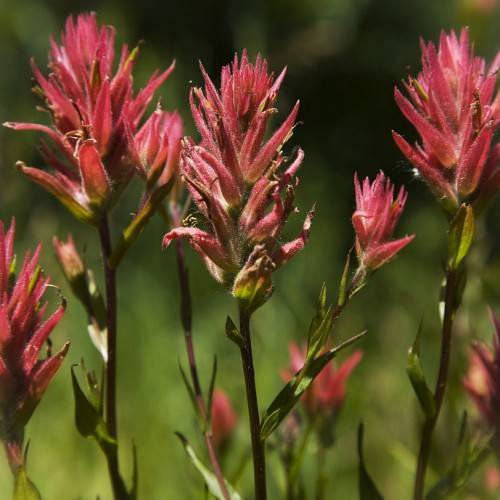
Elko Indian Paintbrush
Castilleja miniata var. fulva
Watering:
Frequent
Hardiness Zone:
Sun:
full sun,part shade
Growth Rate:
Low
Drought Tolerant:
Yes
Care Level:
Medium
watering
Giant Red Indian Paintbrush prefers well-drained soil and full sun, and should be watered regularly. Water the plants deeply and thoroughly twice a week—once in the morning and again in the afternoon. Let the top inch or so of soil dry out in between waterings. If this species gets too much water it can suffer from root rot so make sure the soil is well-drained. If temperatures get too hot, reduce watering to once a week. However, in the height of summer it may also require supplemental water to avoid wilting. During the winter months, water your Giant Red Indian Paintbrush only once a week. Be sure to check the soil moisture level; if the soil is not wet when you check it, water it.
sunlight
The Giant Red Indian Paintbrush enjoys a bright, sunny position with a minimum of 4 to 6 hours of direct sunlight per day. It thrives in moist and well-drained soils in USDA hardiness zones 3-9. The plant benefits from partial shade in areas of extremely high temperatures during the summer months. Ideal temperatures for the Giant Red Indian Paintbrush range between 65 and 75°F.
pruning
For best results, Giant Red Indian Paintbrush should be pruned in the early spring, before the flowering season begins. Pruning should consist of removal of dead or diseased stems and branches, as well as any stems that are crowding out other growth. When it comes to pruning, the main goal is to maintain the natural shape of the shrub while removing as little vegetation as possible. This means that the pruning should be as light as possible, removing only dead or damaged vegetation. Additionally, any suckers (stems growing from the base of the shrub) should be removed as well.
